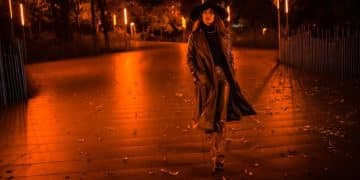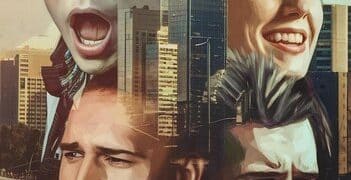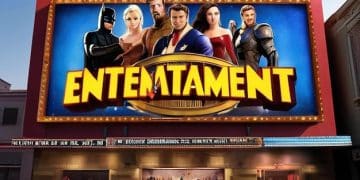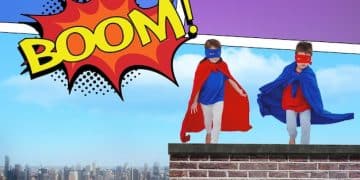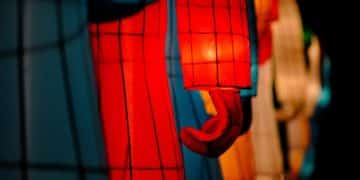The Evolution of the Anti-Hero: From Villain to Protagonist
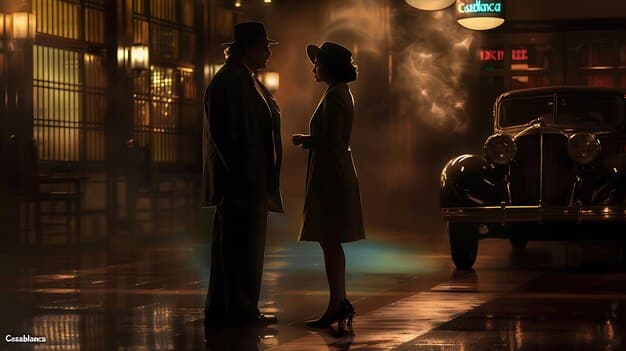
The evolution of the anti-hero traces a fascinating trajectory from antagonists driven by selfish desires to complex protagonists grappling with moral ambiguities, forever changing the landscape of storytelling in cinema.
From classic Westerns to modern superhero narratives, the evolution of the anti-hero: from villain to protagonist is a compelling shift in storytelling. These characters, flawed and often morally ambiguous, now dominate our screens.
The Shifting Sands of Morality in Cinema
The portrayal of good and evil in cinema has undergone a significant transformation. Early films often presented clear-cut heroes and villains, but as society evolved, so did our understanding of morality. This shift paved the way for the emergence of the anti-hero, a character who blurs the lines between right and wrong.
Anti-heroes are not inherently good or evil; they exist in a gray area, making choices that are often questionable, yet relatable. Their flaws and struggles resonate with audiences who are tired of the traditional, flawless hero figure.
The Rise of Relatability
Why are anti-heroes so appealing? It’s often because they mirror our own imperfections. We see ourselves in their struggles, their failures, and their attempts to navigate a complex world. This relatability is a key factor in their growing popularity.
- Moral Ambiguity: Anti-heroes challenge our preconceived notions of good and evil.
- Flawed Characters: Their imperfections make them more human and easier to identify with.
- Complex Motivations: Unlike traditional heroes, their motivations are often driven by personal desires and survival.
This departure from traditional heroes reflects a deeper societal shift towards embracing complexity and questioning established norms. Audiences are drawn to characters who defy easy categorization, prompting reflection on their own values and beliefs.
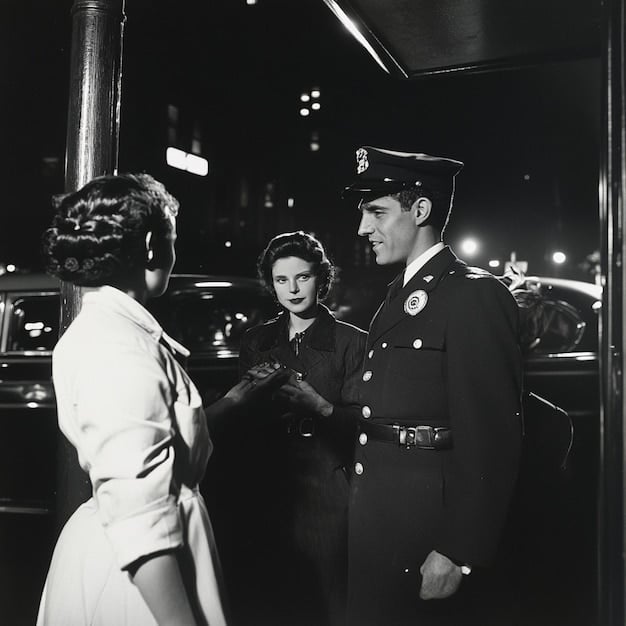
Early Incarnations: The Flawed Protagonist
The anti-hero is not a new phenomenon. Early examples can be found in classic literature, but their presence in cinema became more prominent in the mid-20th century. These early anti-heroes often operated in morally ambiguous environments, making tough choices for survival.
Characters like Rick Blaine from “Casablanca” and Harry Callahan from “Dirty Harry” represent early forms of the anti-hero. They operated outside the traditional boundaries of heroism, taking matters into their own hands and challenging established authority.
Rick Blaine: The Reluctant Hero
Rick Blaine, played by Humphrey Bogart, is a classic example of an early anti-hero. He’s cynical, world-weary, and initially unwilling to get involved in the larger conflict. However, his underlying sense of morality eventually compels him to do the right thing.
Rick’s transformation is gradual and nuanced, showcasing the internal conflict that defines many anti-heroes. His ultimate act of self-sacrifice solidifies his status as a flawed but ultimately heroic figure.
The early anti-heroes set the stage for more complex and morally ambiguous characters to come, laying the groundwork for the evolution we see today.
The Dark Knight: Morality in the Shadows
Christopher Nolan’s “The Dark Knight” offers a compelling exploration of the anti-hero archetype. Batman, as portrayed by Christian Bale, is a vigilante who operates outside the law, using questionable methods to fight crime. His moral code is constantly tested, forcing him to make difficult choices.
Batman’s actions often blur the lines between hero and villain. He resorts to violence, intimidation, and surveillance, raising questions about the ethics of his methods. His internal struggle reflects the inherent complexities of being an anti-hero.
The Joker: A Catalyst for Chaos
The Joker, played by Heath Ledger, serves as a foil to Batman, pushing him to his moral limits. The Joker represents pure chaos, challenging Batman’s belief in order and justice. Their dynamic highlights the inherent contradictions within the anti-hero archetype.
Batman’s willingness to cross ethical boundaries in his pursuit of justice raises profound questions about the nature of heroism. The film’s exploration of these themes solidifies its place as a landmark in the evolution of the anti-hero.
- Moral Dilemmas: The film presents Batman with impossible choices, forcing him to compromise his values.
- Questionable Methods: Batman’s tactics often mirror those of the criminals he fights, blurring the line between hero and villain.
- Societal Impact: The film explores the consequences of vigilantism and the erosion of trust in institutions.
Breaking Bad: Descent into Darkness
“Breaking Bad” presents a stark and unflinching portrayal of a man’s transformation from an ordinary chemistry teacher into a ruthless drug lord. Walter White, played by Bryan Cranston, is a prime example of an anti-hero whose actions become increasingly morally reprehensible.
Walter’s initial motivation for entering the world of drug production is to provide for his family after being diagnosed with cancer. However, as he becomes more deeply involved, his motivations shift, and he becomes driven by power, ego, and a desire for control.
The Slippery Slope of Morality
Walter’s journey is a cautionary tale about the dangers of unchecked ambition. Each decision he makes leads him further down a path of moral compromise, ultimately destroying his relationships and his own sense of self.
His transformation is gradual and believable, making him a compelling and tragic figure. “Breaking Bad” challenges viewers to grapple with the complexities of human nature and the potential for good people to do terrible things.
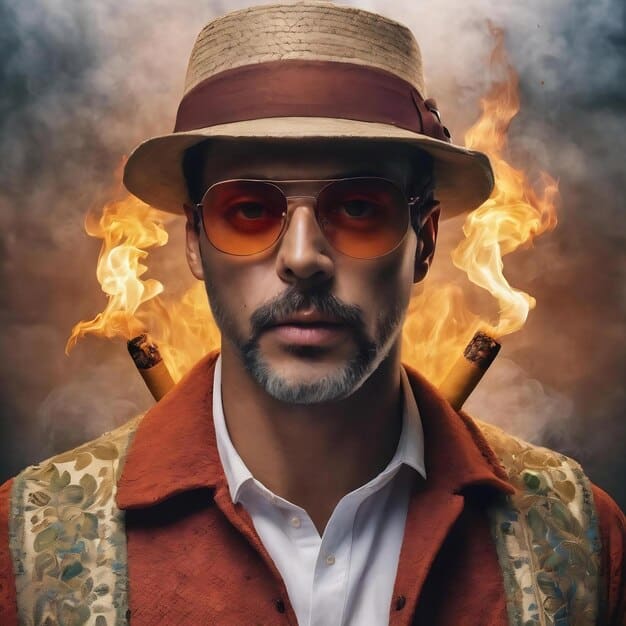
Female Anti-Heroes: Challenging Gender Norms
The rise of female anti-heroes is a significant development in the evolution of the archetype. Characters like Lisbeth Salander from “The Girl with the Dragon Tattoo” and Harley Quinn from DC Comics challenge traditional gender roles and expectations.
These women are often complex, independent, and unapologetic about their flaws. They defy societal norms and expectations, forging their own paths and subverting traditional notions of femininity.
Lisbeth Salander: The Unconventional Heroine
Lisbeth Salander is a brilliant but troubled hacker who operates outside the law. She is fiercely independent, resourceful, and uses her skills to protect herself and others from those who would harm them.
Her unconventional methods and disregard for social norms make her a compelling and empowering figure. Lisbeth represents a new breed of female anti-hero who is both vulnerable and formidable.
- Breaking Stereotypes: Female anti-heroes shatter traditional portrayals of women in media.
- Empowerment: Their independence and resilience are empowering to audiences.
- Complex Characters: They are often more nuanced and multi-dimensional than traditional female characters.
The emergence of female anti-heroes also promotes diversity and inclusivity in storytelling, showcasing a wider range of human experiences.
The Future of the Anti-Hero: Beyond Redemption?
As audiences become more sophisticated, the portrayal of anti-heroes continues to evolve. Modern anti-heroes are often even more morally ambiguous than their predecessors, challenging viewers to question their own values and beliefs.
Some modern anti-heroes are irredeemable, committing acts that are unforgivable. Others struggle with their inner demons, constantly grappling with the consequences of their actions. This complexity is what makes them so compelling.
The Enduring Appeal of Imperfection
Ultimately, the enduring appeal of the anti-hero lies in their imperfections. They remind us that no one is perfect and that everyone struggles with their own inner demons. Their stories offer a reflection of our own humanity.
The evolution of the anti-hero is a testament to the changing landscape of storytelling and the growing desire for characters who are complex, flawed, and relatable. As long as these characters continue to challenge and inspire us, they will remain a vital part of our cultural landscape.
| Key Point | Brief Description |
|---|---|
| 🎭 Moral Ambiguity | Anti-heroes challenge traditional views of good and evil. |
| 🤕 Flawed Characters | Their imperfections make them relatable and human. |
| 🎬 Notable Examples | Batman, Walter White, and Lisbeth Salander redefine heroism. |
| ➡️ Societal Shift | Reflects a broader acceptance of complexity and questioning norms. |
Frequently Asked Questions
▼
An anti-hero is a protagonist who lacks conventional heroic qualities such as idealism, courage, and morality. They often exhibit flaws, engage in questionable behavior, and operate outside the boundaries of traditional heroism.
▼
Anti-heroes resonate with audiences because they are relatable and human. Their flaws and struggles reflect the complexities of real life, making them more compelling than perfect, idealized heroes. They challenge our notions of good and evil.
▼
Classic examples include Rick Blaine from “Casablanca,” Harry Callahan from “Dirty Harry,” and Travis Bickle from “Taxi Driver.” These characters operate in morally ambiguous environments and make difficult choices for survival and justice.
▼
Female anti-heroes, like Lisbeth Salander and Harley Quinn, challenge traditional gender roles and expectations. They are often complex, independent, and unapologetic about their flaws, subverting norms of femininity.
▼
The anti-hero archetype continues to evolve with modern audiences, who seek increasingly nuanced and morally ambiguous characters. These characters prompt viewers to question their own values and beliefs, ensuring their enduring appeal.
Conclusion
The evolution of the anti-hero: from villain to protagonist reflects a profound shift in storytelling, mirroring our evolving understanding of morality. From flawed protagonists to morally ambiguous figures, these characters challenge us to examine our own values and to embrace the complexities of the human condition, ensuring their place in cinema for years to come.
